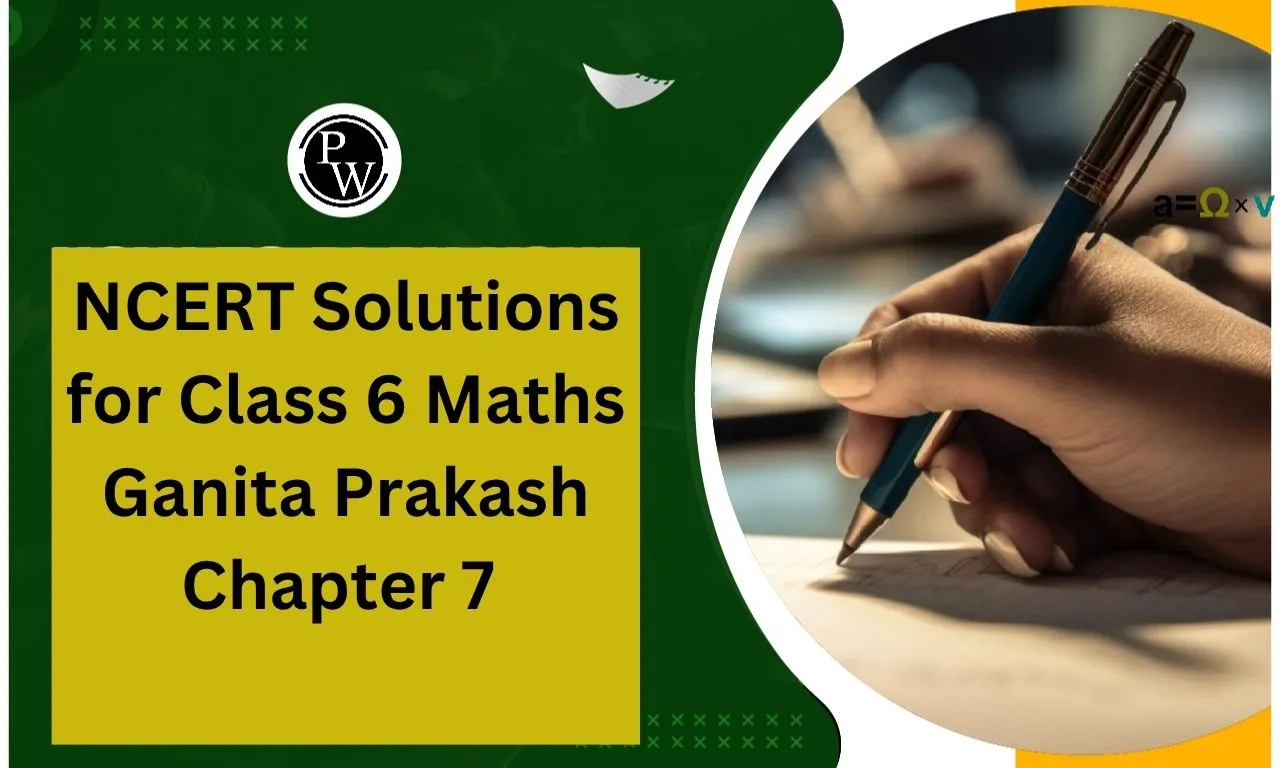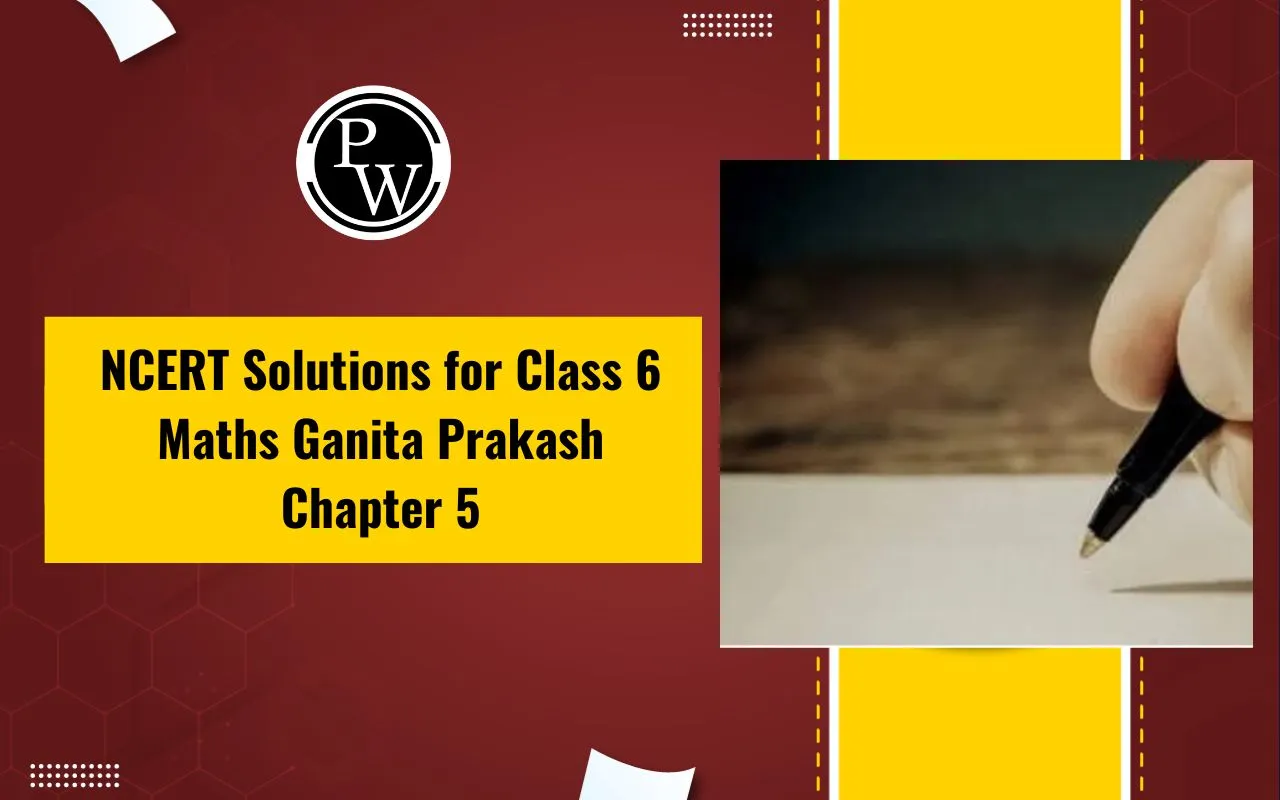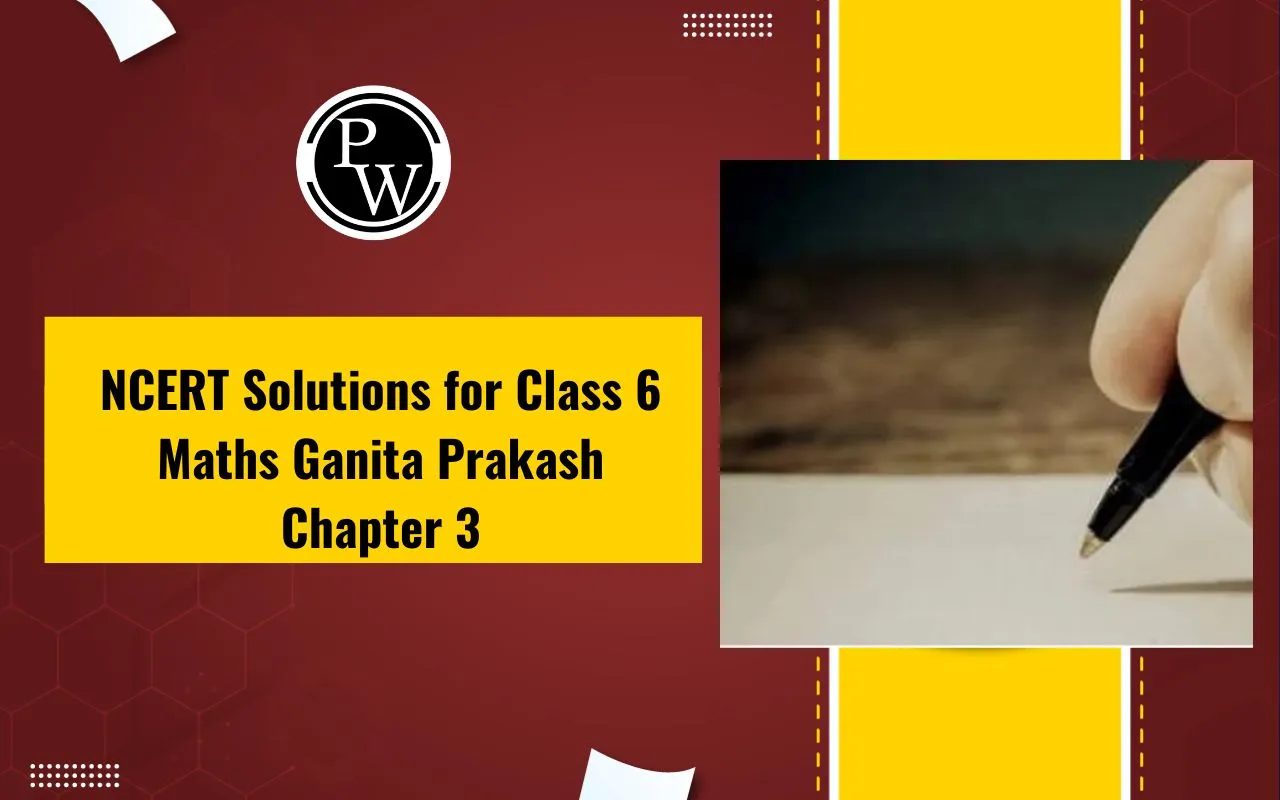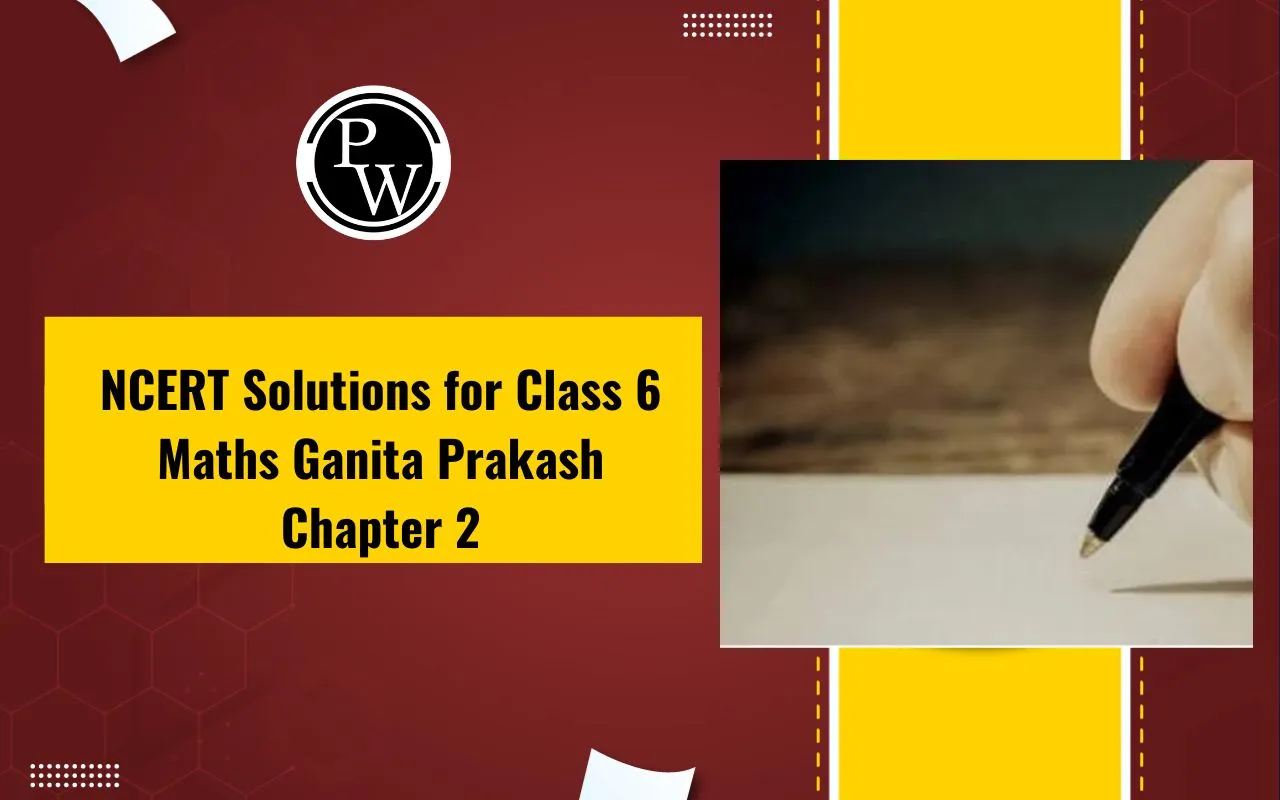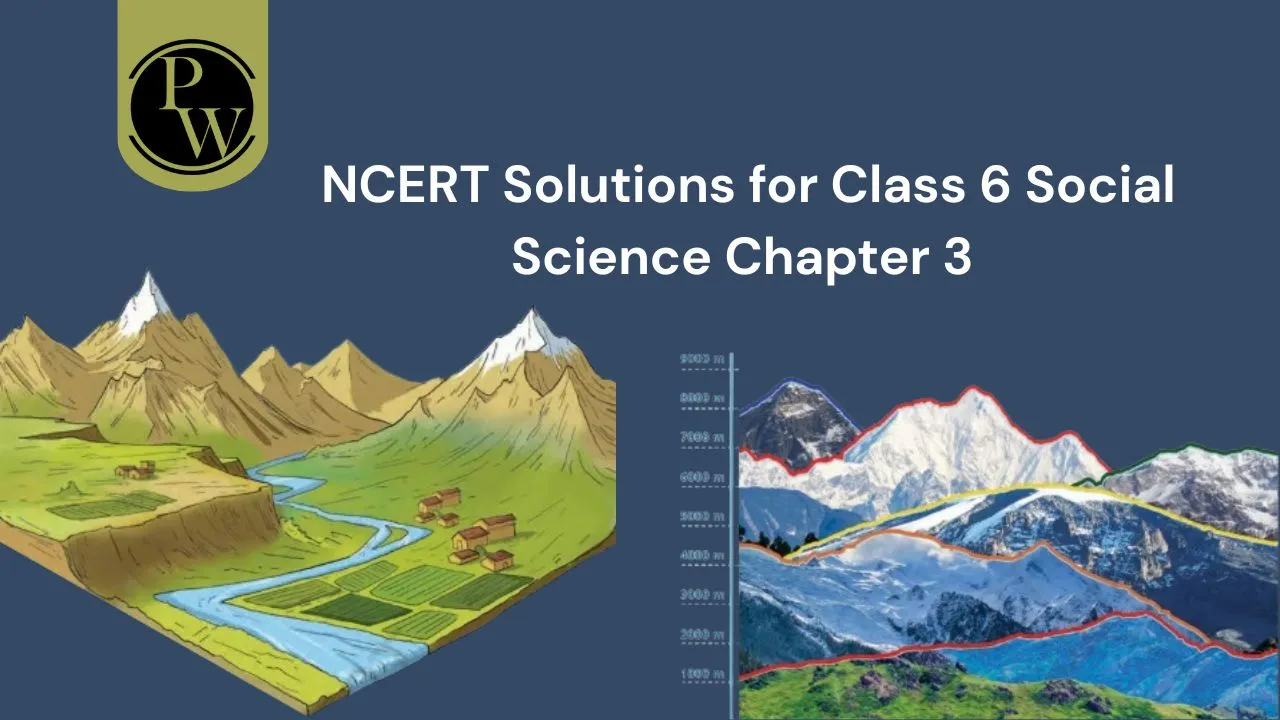
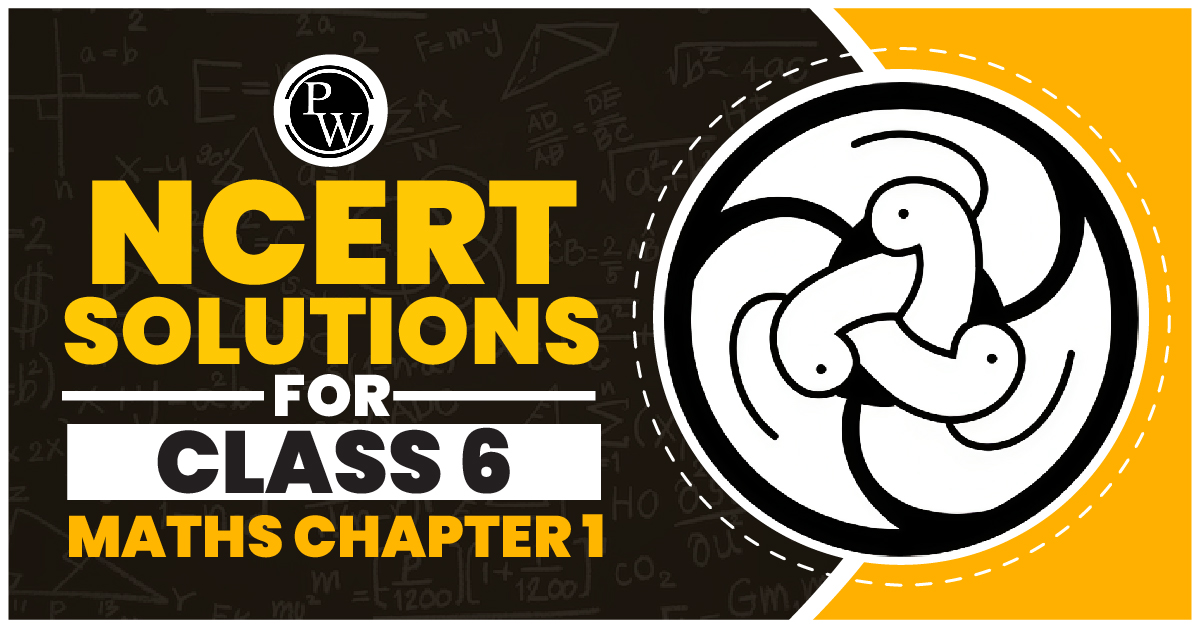
NCERT Solutions for Class 6 Maths Chapter 1
NCERT Solutions For Class 6 Maths Chapter 1: NCERT Solutions for Class 6 Maths Chapter 1, named Knowing Our Numbers, assists students aiming for good academic scores in exams. The experts at PhysicsWallah have created these solutions to help students understand the chapter's concepts and enhance their confidence. The solutions provide methods to solve problems in the textbook quickly and easily, aligning with the Class 6 NCERT syllabus and considering the types of questions in the NCERT textbook. Using these solutions will help students grasp key concepts effortlessly, and all solutions adhere to the latest CBSE guidelines and marking schemes. You can download the PDF format of the NCERT solutions for Chapter 1 from the provided link for exam preparations.NCERT Solutions for Class 6 Maths Chapter 1 Overview
Chapter 1 of the Class 6 maths syllabus, titled 'Knowing Our Numbers,' is crucial for developing a student's number sense. It is divided into five major sections or topics. The NCERT Solutions for Class 6 Maths Chapter 1 cover these important topics. Students are encouraged to carefully read through each topic to understand the concepts introduced in the chapter and use the provided solutions effectively. PhysicsWallah's expert teachers have carefully crafted these solutions to improve clarity in understanding the concepts of this chapter. The goal is to ensure that students, after going through and practising these solutions, can easily score well in exams.NCERT Solutions for Class 6 Maths Chapter 1 PDF
NCERT Solutions for Class 6 Maths Chapter 1 Knowing Our Numbers is prepared by experienced Maths teachers for 6th-grade students. It covers all chapter concepts with clear explanations and plenty of practice questions. This resource aids students in gradual comprehension and effective practice for better performance in exams. PhysicsWallah’s skilled teachers have carefully created these solutions to enhance understanding of the concepts in this chapter. The goal is to help students easily achieve good scores in exams after studying and practising with these solutions. Click the link below to download the NCERT solutions for Class 6 Maths Chapter 1:NCERT Solutions For Class 6 Maths Chapter 1 PDF Download
NCERT Solutions For Class 6 Maths Chapter 1 Knowing Our Numbers
Here are step-by-step explanations for Class 6 Maths Chapter 1 Knowing Our Numbers in a simple language. These solutions are well-liked by sixth-grade students for efficiently finishing homework and getting ready for exams. All the questions and answers from NCERT Book of Class 6 Maths Chapter 1 are available here at no cost. You can enjoy an ad-free experience with PW’s NCERT Solutions. Experts have prepared all NCERT Solutions for Class 6 Maths, ensuring 100% accuracy.Exercise 1.1 PAGE NO: 12
1. Fill in the blanks:
(a) 1 lakh = ………….. ten thousand.
(b) 1 million = ………… hundred thousand.
(c) 1 crore = ………… ten lakhs.
(d) 1 crore = ………… million.
(e) 1 million = ………… lakhs.
Solutions:
(a) 1 lakh = 10 ten thousand = 1,00,000 (b) 1 million = 10 hundred thousand = 10,00,000 (c) 1 crore = 10 ten lakhs = 1,00,00,000 (d) 1 crore = 10 million = 1,00,00,000 (e) 1 million = 10 lakhs = 1,000,000 2. Place commas correctly and write the numerals: (a) Seventy three lakh seventy five thousand three hundred seven (b) Nine crore five lakh forty one (c) Seven crore fifty two lakh twenty one thousand three hundred two (d) Fifty eight million four hundred twenty three thousand two hundred two (e) Twenty three lakh thirty thousand tenSolutions:
(a) The numeral of seventy three lakh seventy five thousand three hundred seven is 73,75,307 (b) The numeral of nine crore five lakh forty one is 9,05,00,041 (c) The numeral of seven crore fifty two lakh twenty one thousand three hundred two is 7,52,21,302 (d) The numeral of fifty eight million four hundred twenty three thousand two hundred two is 5,84,23,202 (e) The numeral of twenty three lakh thirty thousand ten is 23,30,010 3. Insert commas suitably and write the names according to the Indian System of Numeration:(a) 87595762 (b) 8546283 (c) 99900046 (d) 98432701
Solutions:
(a) 8,75,95,762 – Eight crore seventy five lakh ninety five thousand seven hundred sixty two (b) 85,46,283 – Eighty five lakh forty six thousand two hundred eighty three (c) 9,99,00,046 – Nine crore ninety nine lakh forty six (d) 9,84,32,701 – Nine crore eighty four lakh thirty two thousand seven hundred one 4. Insert commas suitably and write the names according to the International System of Numeration:(a) 78921092 (b) 7452283 (c) 99985102 (d) 48049831
Solutions:
(a) 78,921,092 – Seventy eight million nine hundred twenty one thousand ninety two (b) 7,452,283 – Seven million four hundred fifty-two thousand two hundred eighty three (c) 99,985,102 – Ninety-nine million nine hundred eighty five thousand one hundred two (d) 48,049,831 – Forty-eight million forty-nine thousand eight hundred thirty-oneExercise 1.2 PAGE NO: 16
1. A book exhibition was held for four days in a school. The number of tickets sold at the counter on the first, second, third and final day was 1094, 1812, 2050 and 2751. Find the total number of tickets sold on all four days.Solutions:
Number of tickets sold on 1st day = 1094 Number of tickets sold on 2nd day = 1812 Number of tickets sold on 3rd day = 2050 Number of tickets sold on 4th day = 2751 Hence, the total number of tickets sold on all four days = 1094 + 1812 + 2050 + 2751 = 7707 tickets 2. Shekhar is a famous cricket player. He has so far scored 6980 runs in test matches. He wishes to complete 10,000 runs. How many more runs does he need?Solutions:
Shekhar scored = 6980 runs He wants to complete = 10000 runs Runs needed to score more = 10000 – 6980 = 3020 Hence, he needs 3020 more runs to score 3. In an election, the successful candidate registered 5,77,500 votes, and his nearest rival secured 3,48,700 votes. By what margin did the successful candidate win the election?Solutions:
No. of votes secured by the successful candidate = 577500 No. of votes secured by his rival = 348700 Margin by which he won the election = 577500 – 348700 = 228800 votes ∴ The successful candidate won the election by 228800 votes 4. Kirti bookstore sold books worth Rs 2,85,891 in the first week of June and books worth Rs 4,00,768 in the second week of the month. How much was the sale for the two weeks together? In which week was the sale greater and by how much? Solutions: Price of books sold in the first week of June = Rs 285891 Price of books sold in the second week of June = Rs 400768 No. of books sold in both weeks together = Rs 285891 + Rs 400768 = Rs 686659 The sale of books is the highest in the second week. Difference in the sale in both weeks = Rs 400768 – Rs 285891 = Rs 114877 ∴ Sale in the second week was greater by Rs 114877 than in the first week.| CBSE Syllabus Class 6 | |
| CBSE Class 6 Science Syllabus | CBSE Class 6 Maths Syllabus |
| CBSE Class 6 Social Science Syllabus | CBSE Class 6 English Syllabus |
Solutions:
Digits given are 6, 2, 7, 4, 3 Greatest 5-digit number = 76432 Least 5-digit number = 23467 Difference between the two numbers = 76432 – 23467 = 52965 ∴ The difference between the two numbers is 52965. 6. A machine, on average, manufactures 2,825 screws a day. How many screws did it produce in the month of January 2006? Solutions: Number of screws manufactured in a day = 2825 Since January month has 31 days, The number of screws manufactured in January = 31 × 2825 = 87575 Hence, the machine produced 87575 screws in the month of January 2006. 7. A merchant had Rs 78,592 with her. She placed an order for purchasing 40 radio sets at Rs 1200 each. How much money will remain with her after the purchase?Solutions:
Total money the merchant had = Rs 78592 The number of radio sets she placed an order for purchasing = 40 radio sets Cost of each radio set = Rs 1200 So, cost of 40 radio sets = Rs 1200 × 40 = Rs 48000 Money left with the merchant = Rs 78592 – Rs 48000 = Rs 30592 Hence, money left with the merchant after purchasing radio sets is Rs 30592. 8. A student multiplied 7236 by 65 instead of multiplying by 56. By how much was his answer greater than the correct answer?Solutions:
Difference between 65 and 56, i.e. (65 – 56) = 9 The difference between the correct and incorrect answer = 7236 × 9 = 65124 Hence, by 65124, the answer was greater than the correct answer. 9. To stitch a shirt, 2 m 15 cm cloth is needed. Out of 40 m cloth, how many shirts can be stitched and how much cloth will remain?Solutions:
Given The total length of the cloth = 40 m = 40 × 100 cm = 4000 cm Cloth required to stitch one shirt = 2 m 15 cm = 2 × 100 + 15 cm = 215 cm Number of shirts that can be stitched out of 4000 cm = 4000/215 = 18 shirts Hence, 18 shirts can be stitched out of 40 m, and 1 m 30 cm of cloth is left. 10. Medicine is packed in boxes, each weighing 4 kg 500g. How many such boxes can be loaded in a van which cannot carry beyond 800 kg?Solutions:
Weight of one box = 4 kg 500 g = 4 × 1000 + 500 = 4500 g Maximum weight carried by the van = 800 kg = 800 × 1000 = 800000 g Hence, the number of boxes that can be loaded in the van = 800000/4500 = 177 boxes 11. The distance between the school and a student’s house is 1 km 875 m. Every day, she walks both ways. Find the total distance covered by her in six days.Solutions:
Distance covered between the school and her house = 1 km 875 m = 1000 + 875 = 1875 m Since the student walks both ways, The distance travelled by the student in one day = 2 × 1875 = 3750 m Distance travelled by the student in 6 days = 3750 m × 6 = 22500 m = 22 km 500 m ∴ The total distance covered by the student in six days is 22 km and 500 m. 12. A vessel has 4 litres and 500 ml of curd. In how many glasses, each of 25 ml capacity, can it be filled?Solutions:
Quantity of curd in the vessel = 4 l 500 ml = 4 × 1000 + 500 = 4500 ml Capacity of 1 glass = 25 ml ∴ Number of glasses that can be filled with curd = 4500 / 25 = 180 glasses Hence, 180 glasses can be filled with curd.CBSE Board Exam Centre List 2024
Exercise 1.3 Page NO: 23
1. Estimate each of the following using the general rule:(a) 730 + 998 (b) 796 – 314 (c) 12904 + 2888 (d) 28292 – 21496
Make ten more such examples of addition, subtraction and estimation of their outcome.
Solutions:
(a) 730 + 998 Round off to hundreds 730 rounds off to 700 998 rounds off to 1000 Hence, 730 + 998 = 700 + 1000 = 1700 (b) 796 – 314 Round off to hundreds 796 rounds off to 800 314 rounds off to 300 Hence, 796 – 314 = 800 – 300 = 500 (c) 12904 + 2888 Round off to thousands 12904 rounds off to 13000 2888 rounds off to 3000 Hence, 12904 + 2888 = 13000 + 3000 = 16000 (d) 28292 – 21496 Round off to thousands 28292 round off to 28000 21496 round off to 21000 Hence, 28292 – 21496 = 28000 – 21000 = 7000 Ten more such examples are (i) 330 + 280 = 300 + 300 = 600 (ii) 3937 + 5990 = 4000 + 6000 = 10000 (iii) 6392 – 3772 = 6000 – 4000 = 2000 (iv) 5440 – 2972 = 5000 – 3000 = 2000 (v) 2175 + 1206 = 2000 + 1000 = 3000 (vi) 1110 – 1292 = 1000 – 1000 = 0 (vii) 910 + 575 = 900 + 600 = 1500 (viii) 6400 – 4900 = 6000 – 5000 = 1000 (ix) 3731 + 1300 = 4000 + 1000 = 5000 (x) 6485 – 4319 = 6000 – 4000 = 2000 2. Give a rough estimate (by rounding off to the nearest hundreds) and also a closer estimate (by rounding off to the nearest tens):(a) 439 + 334 + 4317 (b) 108734 – 47599 (c) 8325 – 491 (d) 489348 – 48365
Make four more such examples.
Solutions:
(a) 439 + 334 + 4317 Rounding off to the nearest hundreds 439 + 334 + 4317 = 400 + 300 + 4300 = 5000 Rounding off to the nearest tens 439 + 334 + 4317 = 440 + 330 + 4320 = 5090 (b) 108734 – 47599 Rounding off to the nearest hundreds 108734 – 47599 = 108700 – 47600 = 61100 Rounding off to the nearest tens 108734 – 47599 = 108730 – 47600 = 61130 (c) 8325 – 491 Rounding off to the nearest hundreds 8325 – 491 = 8300 – 500 = 7800 Rounding off to the nearest tens 8325 – 491 = 8330 – 490 = 7840 (d) 489348 – 48365 Rounding off to the nearest hundreds 489348 – 48365 = 489300 – 48400 = 440900 Rounding off to the nearest tens 489348 – 48365 = 489350 – 48370 = 440980 Four more examples are as follows:(i) 4853 + 662
Rounding off to the nearest hundreds 4853 + 662 = 4800 + 700 = 5500 Rounding off to the nearest tens 4853 + 662 = 4850 + 660 = 5510(ii) 775 – 390
Rounding off to the nearest hundreds 775 – 390 = 800 – 400 = 400 Rounding off to the nearest tens 775 – 390 = 780 – 400 = 380(iii) 6375 – 2875
Rounding off to the nearest hundreds 6375 – 2875 = 6400 – 2900 = 3500 Rounding off to the nearest tens 6375 – 2875 = 6380 – 2880 = 3500(iv) 8246 – 6312
Rounding off to the nearest hundreds 8246 – 6312 = 8200 – 6300 = 1900 Rounding off to the nearest tens 8246 – 6312 = 8240 – 6310 = 1930 3. Estimate the following products using the general rule:(a) 578 × 161
(b) 5281 × 3491
(c) 1291 × 592
(d) 9250 × 29
Make four more such examples.Solutions:
(a) 578 × 161
Rounding off by general rule 578 and 161 rounded off to 600 and 200, respectively 600 × 200 = 120000(b) 5281 × 3491
Rounding off by general rule 5281 and 3491 rounded off to 5000 and 3500, respectively 5000 × 3500 = 17500000(c) 1291 × 592
Rounding off by general rule 1291 and 592 rounded off to 1300 and 600, respectively 1300 × 600 = 780000(d) 9250 × 29
Rounding off by general rule 9250 and 29 rounded off to 9000 and 30, respectively 9000 × 30 = 270000| NCERT Solutions for Class 6 Maths Chapter-wise Solutions |
NCERT Solutions for Class 6 Maths Chapter 1 FAQs
What are the topics covered in Chapter 1 of NCERT Solutions for Class 6 Maths?
How many problems are there in each exercise of NCERT Solutions for Chapter 1 of Class 6 Maths?
Why should I refer to NCERT solutions for Chapter 1 of Class 6 Maths?
What Makes NCERT Solutions the Best Choice?
How can I learn Maths in Chapter 1 of Class 6 Maths?

